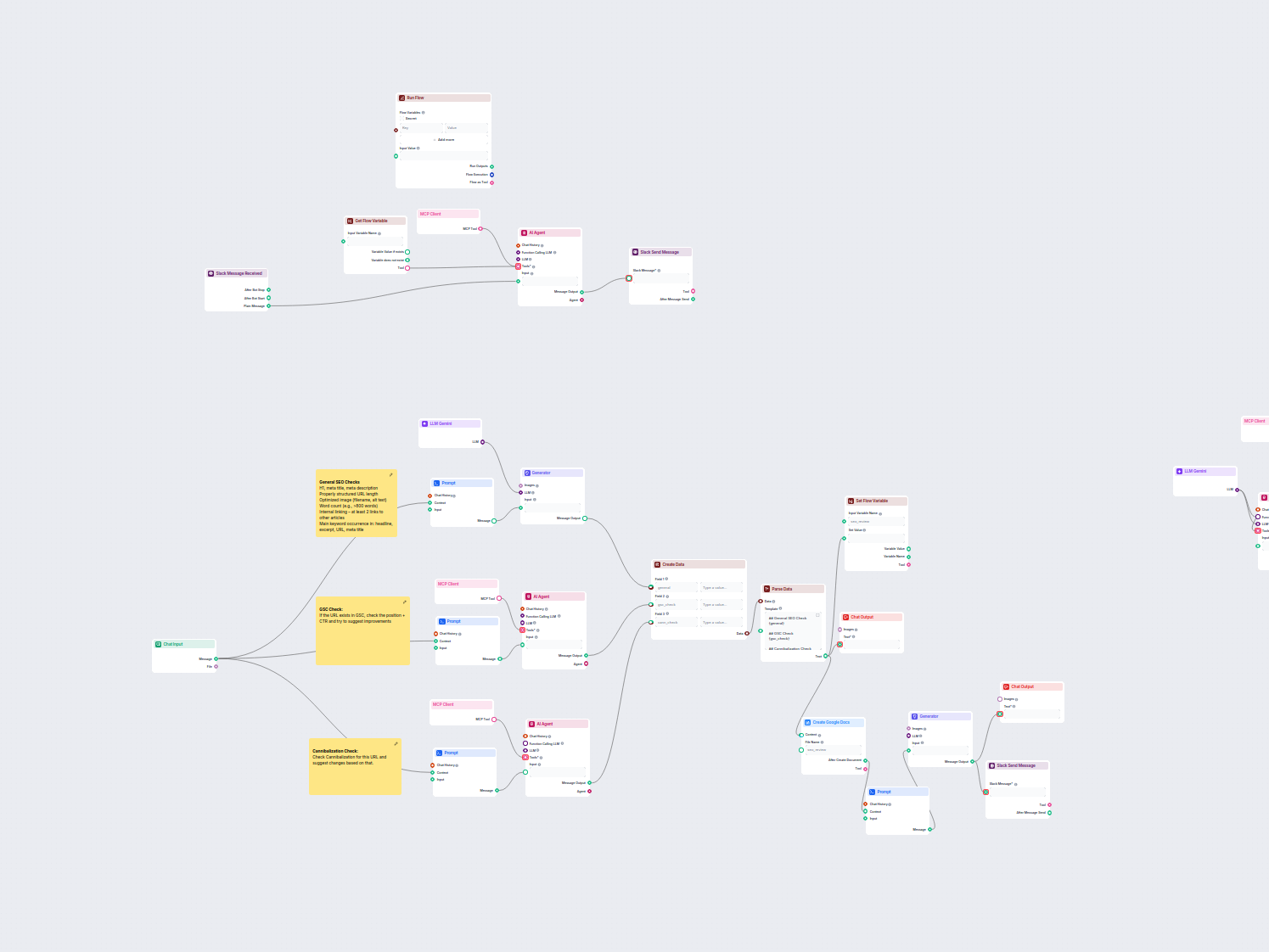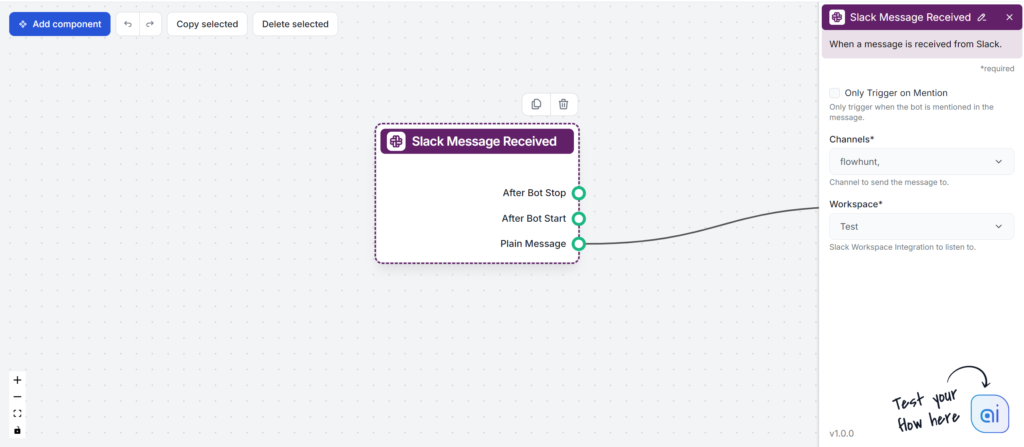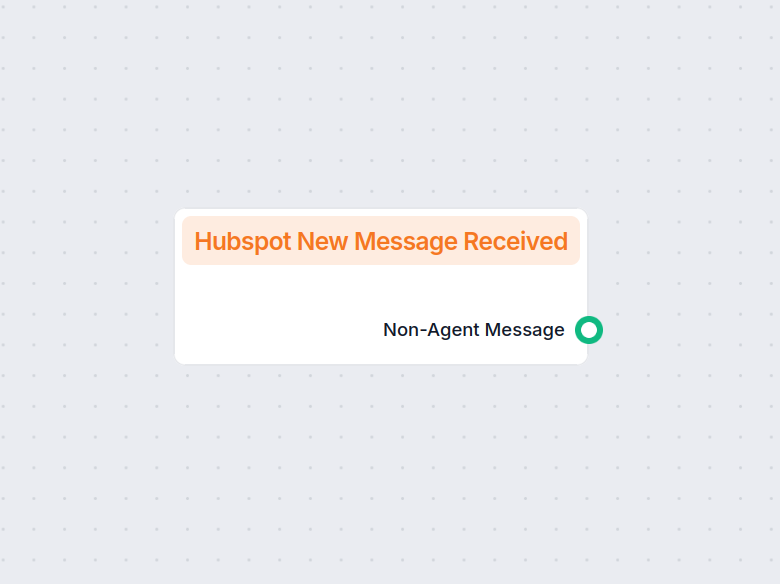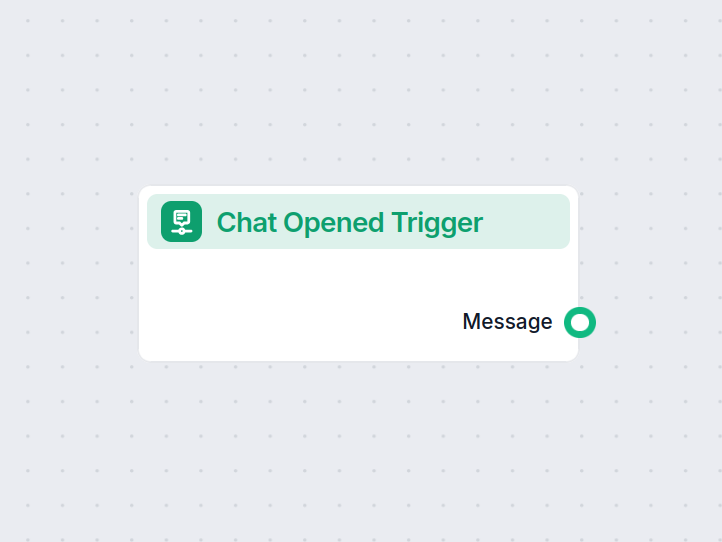
Auditoría SEO Automatizada y Flujo de Trabajo con Slack
Este flujo de trabajo automatiza el proceso de revisión y auditoría SEO para páginas web. Analiza el contenido de la página en busca de mejores prácticas de SEO...
Descripción del componente
This component represents the user message at the start of a Slack conversation with FlowHunt. You can think of it as a trigger component or an Input component. It lets you control when, where, and how Flo’s Slack responses are triggered.
Using this component requires an active Slack Integration. If you haven’t integrated Slack yet, follow this guide.
The Slack Message Received component is a trigger node designed for AI workflows that need to react to incoming Slack messages. It allows your workflow to listen for messages in specific Slack channels and respond or process them further as part of your automation.
This component listens for messages sent to selected Slack channels within a specified Slack workspace. When a message is received, it triggers the rest of your workflow, passing along the content and metadata of the message for downstream processing. It’s especially useful for integrating Slack communications with AI-driven processes, such as chatbots, notifications, or data logging.
Setting up channels and workspace is necessary for the Flow to work.
| Field | Description | Required | Type |
|---|---|---|---|
| Workspace | Select the Slack workspace integration where the component will listen for messages. | Yes | Dynamic single select |
| Channels | Choose one or more Slack channels to monitor for incoming messages. Up to 5 channels can be selected. | Yes | Dynamic multi-select |
| Only Trigger on Mention | If enabled, the workflow is only triggered when the bot is mentioned in a message. | No | Boolean (true/false) |
| Slack Message | The actual message content received from Slack. (Used internally, not shown in UI) | No | Message |
Note: Some fields, such as “Slack Message”, are primarily used for internal message passing within the workflow and are not displayed to end users.
When a message is received, the component produces several outputs that can be used by subsequent nodes in your workflow:
| Output | Description | Type |
|---|---|---|
| Plain Message | The received message content. | Message |
| After Bot Start | Message output after the bot has started. | Message |
| After Bot Stop | Message output after the bot has stopped. | Message |
These outputs provide flexibility in how your workflow handles different message events from Slack.
This component is essential for anyone looking to build intelligent, responsive Slack integrations as part of an AI-driven process.
This setting controls how you trigger an answer from FlowHunt:
Para ayudarle a comenzar rápidamente, hemos preparado varios ejemplos de plantillas de flujo que demuestran cómo utilizar el componente Mensaje de Slack Recibido de manera efectiva. Estas plantillas muestran diferentes casos de uso y mejores prácticas, facilitando la comprensión e implementación del componente en sus propios proyectos.
Este flujo de trabajo automatiza el proceso de revisión y auditoría SEO para páginas web. Analiza el contenido de la página en busca de mejores prácticas de SEO...
Actúa como disparador al inicio de una conversación de Slack con FlowHunt, permitiéndote controlar cuándo, dónde y cómo se activan las respuestas de Slack según la configuración y las menciones de usuario.
Puedes seleccionar en qué canales y espacios de trabajo de Slack añadir FlowHunt y elegir si el bot responde a todos los mensajes o solo cuando se le menciona.
Sí, debes tener una integración activa de Slack con FlowHunt antes de poder usar el componente Mensaje de Slack Recibido.
Los manejadores de salida te permiten definir qué sucede después de eventos en Slack, como cuando el bot inicia, se detiene o recibe un mensaje simple.
Comienza a crear flujos de trabajo potenciados por IA en Slack. Optimiza las conversaciones y automatiza el soporte con la plataforma sin código de FlowHunt.
Este componente representa los mensajes de Slack de FlowHunt hacia ti. Te permite controlar dónde y cómo FlowHunt envía mensajes y a quién notifica.
Activa flujos de trabajo automatizados en FlowHunt cada vez que se recibe un nuevo mensaje de HubSpot. Ideal para integrar automatización basada en la comunicac...
El componente Disparador de Chat Abierto detecta cuando se inicia una sesión de chat, permitiendo que los flujos respondan instantáneamente en cuanto un usuario...
Consentimiento de Cookies
Usamos cookies para mejorar tu experiencia de navegación y analizar nuestro tráfico. See our privacy policy.



